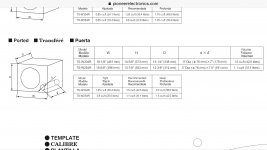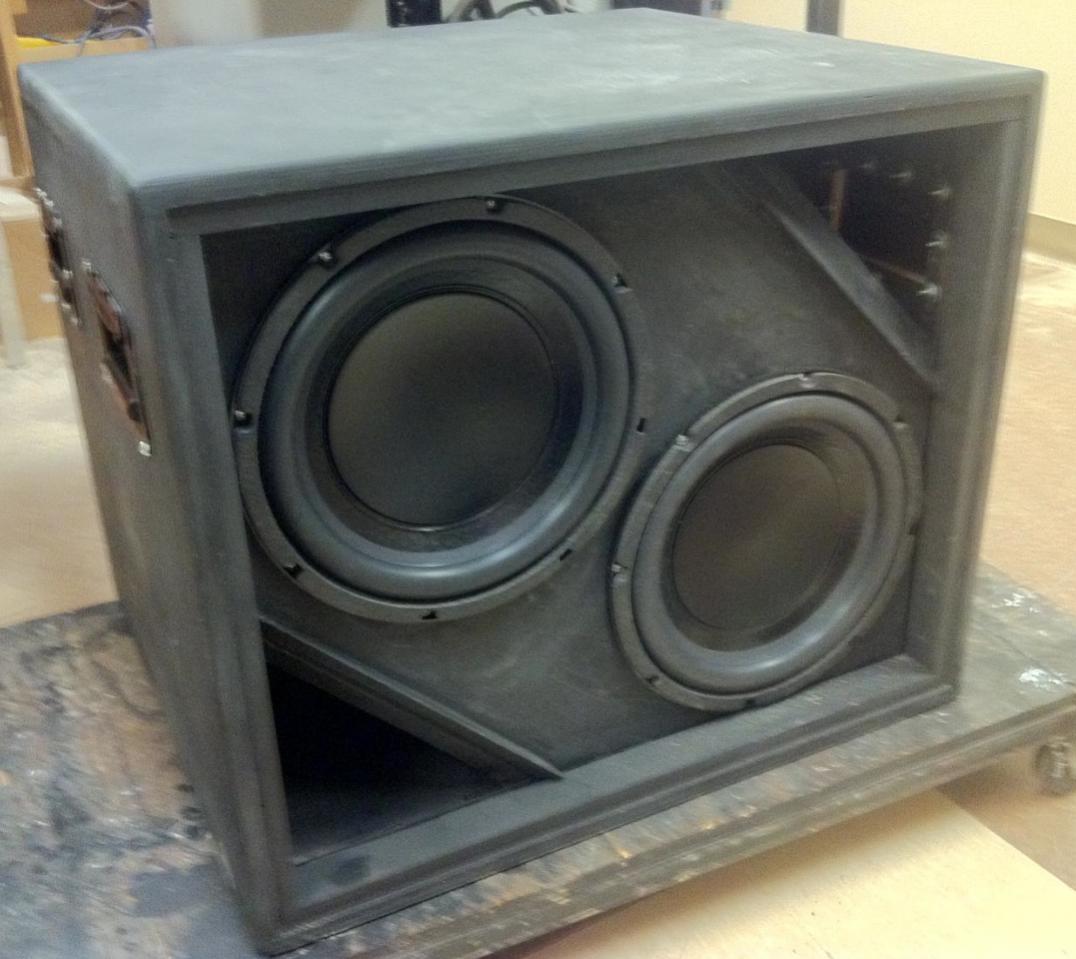So I'm going to make a subwoofer box from the recommended sizes in my subwoofer Manuel and I wanted to change the dimensions to something more shallow but longer but of course keeping it the same recommended volume requirement. Would this mess with the performance if I change the dimensions but keep the same volume? And also I want to know can I convert the circular port dimensions into a rectangular dimension.


If the volume is the same it is OK, but do not make very long and slim box - it will turn into a bad TL box, sort of.
Same area: 76mm (3") circle = 67.35 mm square.
Same area: 76mm (3") circle = 67.35 mm square.
Yes, but using a rectangular port like a rond one will give more turbulance. So u need to make them bigger and then they will have to be longer. Integrating it in a corner is IMHO often a better idea if you want somehing else then round. Something like: The Lab12 PA Subwoofer Smack Down/Death Match

It was a rectangular portIf the volume is the same it is OK, but do not make very long and slim box - it will turn into a bad TL box, sort of.
Same area: 76mm (3") circle = 67.35 mm square.
Disregard my last comment but I also see there's different volumes of boxes you can do based on the sound tight versus recommended versus deep what is this mean? And what does it affect?
Well, in Pioneer 'speak', 'Tight' means high tuned, 'Deep' means low tuned and 'Optimum' is in the middle.
Around here, 'tight' means highly damped, so 'deep' would be the closest, though being mobile audio designs, all of them are severely under-damped, i.e. 'loose', ringing', 'boomy', or 'tight' according to Pioneer.
If perchance this is for HIFI/HT use, then none of them really apply.
GM
Around here, 'tight' means highly damped, so 'deep' would be the closest, though being mobile audio designs, all of them are severely under-damped, i.e. 'loose', ringing', 'boomy', or 'tight' according to Pioneer.
If perchance this is for HIFI/HT use, then none of them really apply.
GM
Sorry I don't understand your lingo can you elaborate. I am using this for home theater so what size would you recommend. And as far as making another box with different dimensions but the same volume. What can I use as far as a program or a calculator to help me keep the same volume but change the dimensions?Google SketchUp?
Hmm, the only way I can break it down further is to provide measurement plots and somewhat educate you on Thiele-Small [T/S] filter theory, which is available on various DIY forums, folk's websites, so recommend researching it along with over & under-damped speaker responses if you're curious enough.
Which driver, there's [2] listed? The short answer for HT apps is a large, tapered transmission line [TQWT] or a tapped variant [TTL, TH].
I've seen a number of on-line box design calculators that's a lot simpler to use than SketchUp unless one is already using it, including one like you want, so probably more, but haven't saved any links.
GM
Which driver, there's [2] listed? The short answer for HT apps is a large, tapered transmission line [TQWT] or a tapped variant [TTL, TH].
I've seen a number of on-line box design calculators that's a lot simpler to use than SketchUp unless one is already using it, including one like you want, so probably more, but haven't saved any links.
GM
Hmm, the only way I can break it down further is to provide measurement plots and somewhat educate you on Thiele-Small [T/S] filter theory, which is available on various DIY forums, folk's websites, so recommend researching it along with over & under-damped speaker responses if you're curious enough.
Which driver, there's [2] listed? The short answer for HT apps is a large, tapered transmission line [TQWT] or a tapped variant [TTL, TH].
I've seen a number of on-line box design calculators that's a lot simpler to use than SketchUp unless one is already using it, including one like you want, so probably more, but haven't saved any links.
GM
It's the 304r and what would be the big difference using those box types versus regular ported box
- Status
- Not open for further replies.
- Home
- Loudspeakers
- Subwoofers
- Making subwoofer box and changing circle port to rectangle